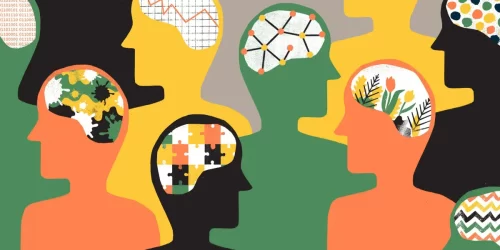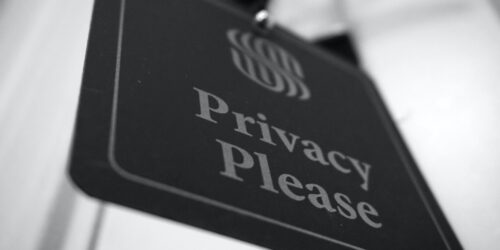Inclusiveness for 2SLGBTQ+ Students in Collaborative Work
Key words: 2SLGBTQ+, gender, sexuality, inclusiveness, anti-oppression, group work
What? The main purpose of this teaching tip is to assist educators in supporting 2SLGBTQ+ students in the classroom and in collaborating with other students.
So What? This is important as many of our students identify as 2SLGBTQ+, have a right to be welcomed and supported in our classrooms, and may not always feel that they are.
Now What? This teaching tip will provide educators with concrete ways to prevent and challenge discrimination against 2SLGBTQ+ students in the classroom, and support diverse student groups when working collaboratively.
At Conestoga
At Conestoga, one of our values is respect, which means supporting the rights and dignities of all our students – this includes our 2SLGBTQ+ students, who are increasingly out and participating in higher education. Ensuring a welcoming and respectful environment for 2SLGBTQ+ students is vital for these students’ learning, but it requires some knowledge of the barriers 2SLGBTQ+ students might face in the classroom, and how to prevent and alleviate these issues.
What is 2SLGBTQ+?
2SLGBTQ+ is an acronym used to describe various sexualities and gender identities. The acronym 2SLGBTQ+ is defined as: Two-Spirit, Lesbian, Gay, Bisexual, Transgender, Queer/Questioning and others (e.g., intersex, asexual, pansexual). The ordering of the letters in this acronym is sometimes different. The acronym, however it is ordered, is inclusive of all gender identities that are not cisgender, and all sexualities that are not heterosexuality.
Some Useful Terms
Cisgender refers to a person whose gender identity aligns with the sex they were assigned at birth, whereas transgender refers to those whose gender identity and/or expression is different from the sex they were assigned at birth; an easy way to think of this is that, generally, if someone is not trans, they are cisgender (visit the Human Rights Campaign glossary of terms for more information). Trans is an umbrella term that encompasses identities including, but not limited to, transgender, transsexual, genderqueer, and gender non-conforming. Trans identities are gender identities that may be outside of the gender binary.
Gender binary refers to the idea that there are only two (opposing) genders, and the assumption that each person is one (and only one) of these two genders. The gender binary assumes that everyone is either a cisgender man or a cisgender woman, which erases other gender identities. The gender binary is challenged by many identities in the 2SLGBTQ+ community, such as individuals who identify as non-binary, agender, or genderqueer. The gender diversity in the 2SLGBTQ+ community also highlights important distinctions between gender identity and gender expression: Gender identity refers to who an individual knows themselves to be, and includes terms previously mentioned, such as cisgender, transgender, non-binary, genderqueer, Two Spirit, etc. Gender expression refers to how individuals express their gender, and includes characteristics like names, pronouns (he/she/they, etc.), dress, body language, and more. This is important because sometimes individuals identify with a gender that is not immediately obvious through their gender expression; this means that we might not know what pronouns a student uses from their name, or from the gender listed on their student profile.
Heterosexual refers to a person who is attracted (physically, sexually, and emotionally, etc.) to members of what is constructed as the “opposite” gender (for example, a person who identifies as a woman is attracted primarily to people who identify as men). Often, heterosexual people are referred to as being straight. People who do not identify as heterosexual may identify as lesbian, gay, bisexual, queer, or with other less common or emerging terms.
It is important to note that, though these identities are new to many, they have a historical lineage that must be recognized (Norton, 2016). While new terms are indeed emerging, the identities themselves are not new. Diversity in gender identity and sexuality has a long history: historically these identities were criminalized and pathologized (i.e., considered a mental disorder), meaning individuals who identified in this way were not safe to do so in public spaces (Drescher, 2010). Still today, there is a lot of stigma, medicalization of, and discrimination against individuals who identify as 2SLGBTQ+ (Rankin, 2006). While we are increasingly seeing more sexual and gender diversity in public life, including on college campuses, it is important to recognize that 2SLGBTQ+ individuals have always existed and participated in society.
The Suggested Approach: Create a Non-Discriminatory Environment for Learning
Most research on 2SLGBTQ+ students in higher education suggests that 2SLGBTQ+ students experience high rates of victimization on campus, including verbal harassment, physical assault, and a general negative climate of discrimination (Garvey, Taylor & Rankin, 2014; Rankin, 2006).
These experiences are not only detrimental to 2SLGBTQ+ students’ self-esteem and sense of safety, but impact their ability to learn. Research has demonstrated the importance of non- discriminatory learning environments to foster positive outcomes in learning and development (Rankin, 2006). Not surprisingly, studies have also found that academic achievement and persistence is negatively affected for students who perceive the learning environment to be discriminatory (Rankin, 2006).
It is therefore essential that faculty actively and deliberately create a non-discriminatory and inclusive learning environment for 2SLGBTQ+ students in the classroom, and provide clear guidelines for how students engage with each other in group work, whether this takes place within or outside of the class.
Integrating and Supporting 2SLGBTQ+ Students in the Classroom
- The pronouns and names that individuals use varies from person to person. Ask students for their name and pronouns, if they feel comfortable, on the first day of class. If a student gives you a name and/or pronouns that do not align with your class list, make the changes and refer to the student using the name and pronouns they have given you. Share the following forms for students to change their personal information or change their preferred name/gender.
- If you use nametags in your class, ask students to list their name and pronouns, if they feel comfortable, on their nametags (explain to students what pronouns are, as some students might be new to these ideas). This helps to normalize conversation around pronouns (and pronouns we aren’t as familiar with), and demonstrates to students that we all have pronouns. This way, if a student uses a less common pronoun (such as “they/them”) they are not the only ones who have to make their pronouns known to the rest of the class.
- Tell students at the beginning of the term that your classroom is an inclusive one. Discrimination will not be tolerated. Outline Conestoga’s policy so that students have a good understanding of what constitutes discrimination and harassment. Point students in the direction of further optional reading. Tell students that you will not tolerate harassment based on actual or perceived sexual orientation, or nonconformity to gender norms, identity, or expression (this includes derogatory language aimed at the 2SLGBTQ+ community in general, even if it is not directed at a particular student).
- If dividing students into “teams” or “groups” for an in-class activity, don’t divide the class according to gender (for example, “all the men on this side, and all the women on this side”). Students in your class may not identify as one of these two genders, and will have difficulty participating. Furthermore, even students who do identity as one of these genders, but who do not express their gender in a typically masculine or feminine way, might experience subtle or overt discrimination and hostility from other students, based on the team they choose. Instead, use other methods to divide students, like assigning numbers, colours, or dividing students alphabetically.
- Use inclusive terms when talking about gender: Don’t say “both genders” or “either gender” or “the opposite gender”, all of which indicate that there are only two genders, and invisibilize those whose genders fall outside of this binary.
- Use inclusive terms when talking about sexuality: Instead of using “gay” or “homosexual” as umbrella terms, use “LGBTQ+”, “2SLGBTQ” or “Lesbian, gay, bisexual, transgender, queer, Two Spirit”.
- Maintain confidentiality for your students: Do not “out” an LGBTQ+ student who has talked to you about their identity – they may not be out to others, and exposing someone’s LGBTQ+ identity to others can have negative and sometimes dangerous consequences for the individual.
- Examine your course and/or curriculum: Be sure that the content and examples you use are diverse and do not assume heterosexuality and cisgender identity to be “normal” or the default.
- Do not ask 2SLGBTQ+ students to speak for an entire group. If something arises related to 2SLGBTQ+ identity, provide space for respectful classroom discussion, and draw on any knowledge you might have. Make space for 2SLGBTQ+ students to voice their knowledge or thoughts voluntarily, but don’t expect or call upon students who identify as 2SLGBTQ+ to be the “experts” on the topic.
- Please note that Conestoga respects religious freedom (or creed) and expression, and recognizes that this freedom can sometimes be perceived as contrary to the right to sexual orientation, gender identity, and gender expression. It is important to be explicit that rights do not supersede one another. It is common for it to be assumed that all people of religious faiths are homophobic or transphobic. We recognize this not to be true. Further, many LGBTQ people are religious and thus need access to rights protections for religious expression as well as sexual orientation, gender identity, and gender expression.
- The professor’s responsibility is to ensure that all dialogue conducted in class is respectful and non-threatening. Ensuring a safe learning environment within the classroom takes precedence. If a homophobic student refuses to work with a 2SLGBTQ student, the homophobic student should be removed from the project, rather than the 2SLGBTQ student.



